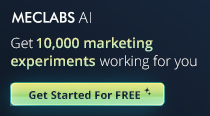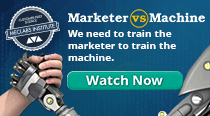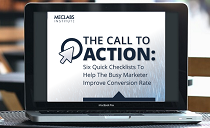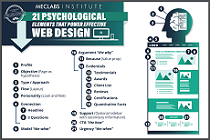
|
SUMMARY:
Intent-driven commercial HVAC lead optimization. I guess I could have called the article that, but it’s a bit of a mouthful. So a simpler way to put it is – sometimes two campaigns are better than one (3x AOV better). Cut costs; gain high-value leads. Read on to see how the team split the campaigns, used AI + automation to lower CPL, and tracked all the way to the final conversion to ensure they got the most bank for their advertising buck. |
Action Box: AI Guild
Join us for conversion-focused AI training from the lab that started it all. Get your free three-month scholarship (from MeclabsAI, MarketingSherpa’s parent company).
Be Cool Refrigeration is a London-based commercial HVAC service.
The company was running a single Google Ads campaign split into three ad groups all drawing from the same £2,650 budget for January 2025:
“At first glance, Be Cool Refrigeration’s Google Ads looked like a success story – leads rolling in, tracked calls ticking upward,” said Jhonty Barreto, Founder, Seo Engico.
But when the team dug into which clicks actually turned into paying jobs, they discovered a gaping disconnect between cost per lead and real revenue.
On paper, performance looked decent: 307 clicks yielded 23 tracked conversions at a cost per lead of £115. But most ‘leads’ were price-shoppers who booked nothing more than one-hour tune-ups (£300 max) and were for small, residential jobs, not high-ticket commercial clients.
Customers searching for high-value commercial installs were drowning in a sea of general ads. Without clear segmentation, Google’s algorithm struggled to optimize, and expensive installation queries sapped the budget with almost zero returns.
In March of this year, the team split the single campaign into two separate campaigns based on customer intent:
They spent £2,820 on the installation campaign, which they ran for the whole month. They launched the repair and service campaign in the last 11 days of the month and spent £440 on it.
When auditing the previous campaign, they found that ads were being triggered for competitor brand names and irrelevant searches (like residential AC repair or DIY terms). So they used AI workflow automation to monitor incoming search terms in real time using the Gemini language model.
“Pulled search terms from the Google Ads API…Using n8n, search terms from the Ads API feed into a Gemini-powered [natural language] classifier… Fed those into a dynamic negative keyword list via Google Ads Scripts and Sheets…” Barreto explained.
Creative Sample #1: Automated negative keyword workflow

Irrelevant (residential terms and job-seeker queries like ‘jobs with HVAC company’) and DIY-oriented queries (e.g., ‘how to fix my AC,’ ‘how to fix my AC at home,’ etc.) are flagged and auto-added to shared Google Sheets, eliminating wasted spend 24/7 and preserving the budget for higher-value leads.
The team also integrated the CRM with the call verification so they could see how the ads drove actual revenue, not just calls. “We installed Televox call tracking on landing pages and synced call data directly with Be Cool’s Commusoft CRM,” he said.
This let the team to answer two critical questions:
“We used to look at cost per call. Now we track which campaigns actually lead to booked jobs and that’s changed how we spend every pound,” said Ali Elm, Operations Director, Be Cool Refrigeration.
“It was eye-opening,” he continued. “Some campaigns looked good on paper, but the leads never turned into jobs. The tracking helped us shift spend to what actually made money.”
There was a slight risk that splitting the campaigns might slow down data collection initially, especially if one had less volume. But overall, separating them helped Google optimize more effectively, improving overall results. And the budget was no longer spent on higher-volume (but lower-value) queries.
“Machine learning thrives on clarity. When you give Google clean, intent-driven signals, it rewards you with lower CPLs and higher Quality Scores,” Barreto said.
The new approach with two focused campaigns decreased cost per lead 24% – from £115 to £87.78 – while tripling average order value (AOV) from £300 to £1,000.
“We used to think more budget meant more leads. Now we know that the right structure, tracking, and automation mean better leads and better jobs. It’s made all the difference,” Elm concluded.
Intent-Driven Approach: Case studies about influencers, PR, and B2B marketing
Mobile Ad Campaign Optimization: 6 tactics from a high-performing marketer to increase conversion
What Is Marketing Optimization: Examples of SEO, CRO, and website speed optimization
Get Better Business Results With a Skillfully Applied Customer-first Marketing Strategy

The customer-first approach of MarketingSherpa’s agency services can help you build the most effective strategy to serve customers and improve results, and then implement it across every customer touchpoint.
Get More Info >MECLABS AI

Get headlines, value prop, competitive analysis, and more.
Use the AI for FREE (for now) >Marketer Vs Machine

Marketer Vs Machine: We need to train the marketer to train the machine.
Watch Now >Live, Interactive Event

Join Flint McGlaughlin for Design Your Offer on May 22nd at 1 pm ET. You’ll learn proven strategies that drive real business results.
Get Your Scholarship >Free Marketing Course

Become a Marketer-Philosopher: Create and optimize high-converting webpages (with this free online marketing course)
See Course >Project and Ideas Pitch Template

A free template to help you win approval for your proposed projects and campaigns
Get the Template >Six Quick CTA checklists

These CTA checklists are specifically designed for your team — something practical to hold up against your CTAs to help the time-pressed marketer quickly consider the customer psychology of your “asks” and how you can improve them.
Get the Checklists >Infographic: How to Create a Model of Your Customer’s Mind

You need a repeatable methodology focused on building your organization’s customer wisdom throughout your campaigns and websites. This infographic can get you started.
Get the Infographic >Infographic: 21 Psychological Elements that Power Effective Web Design

To build an effective page from scratch, you need to begin with the psychology of your customer. This infographic can get you started.
Get the Infographic >Receive the latest case studies and data on email, lead gen, and social media along with MarketingSherpa updates and promotions.